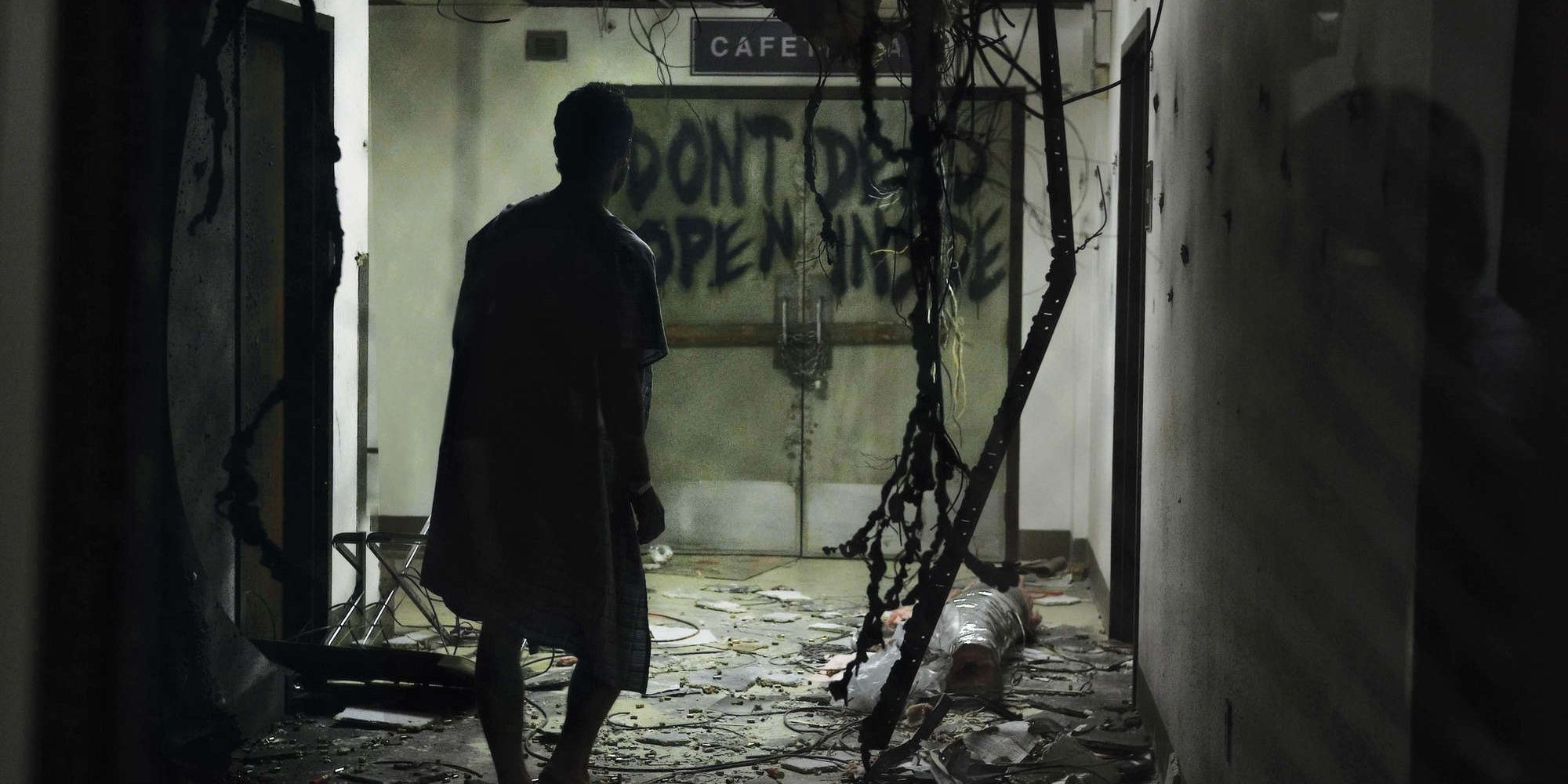
Summary
- The Walking Dead series skips the apocalypse, starting after society already collapsed.
- It’s unrealistic in zombie fiction for the classic undead to overwhelm modern military.
- Fear the Walking Dead tried to show the outbreak but fell back on survivalist tropes.
For several years now, “The Walking Dead” has captivated viewers with its intense and moving portrayal of a world dominated by zombies. However, fans have pointed out that the AMC original series often falls into one of the most common pitfalls in zombie plots, which becomes apparent from the very first episode. The enigma surrounding how the apocalypse transpired before Rick Grimes (played by Andrew Lincoln) awoke from his coma remains unanswered to the satisfaction of many viewers.
Instead of depicting the actual fall of society as it happens, The Walking Dead jumps directly to the outcome. This narrative approach certainly adds suspense, but it also underscores one of the main challenges in zombie stories: the frequent avoidance of explaining precisely how hordes of zombies could conquer modern civilization. In truth, the notion that an undead uprising could subdue military personnel, police, and well-equipped civilians is hard to accept.
The Walking Dead’s Big Narrative Shortcut: Skipping the Apocalypse
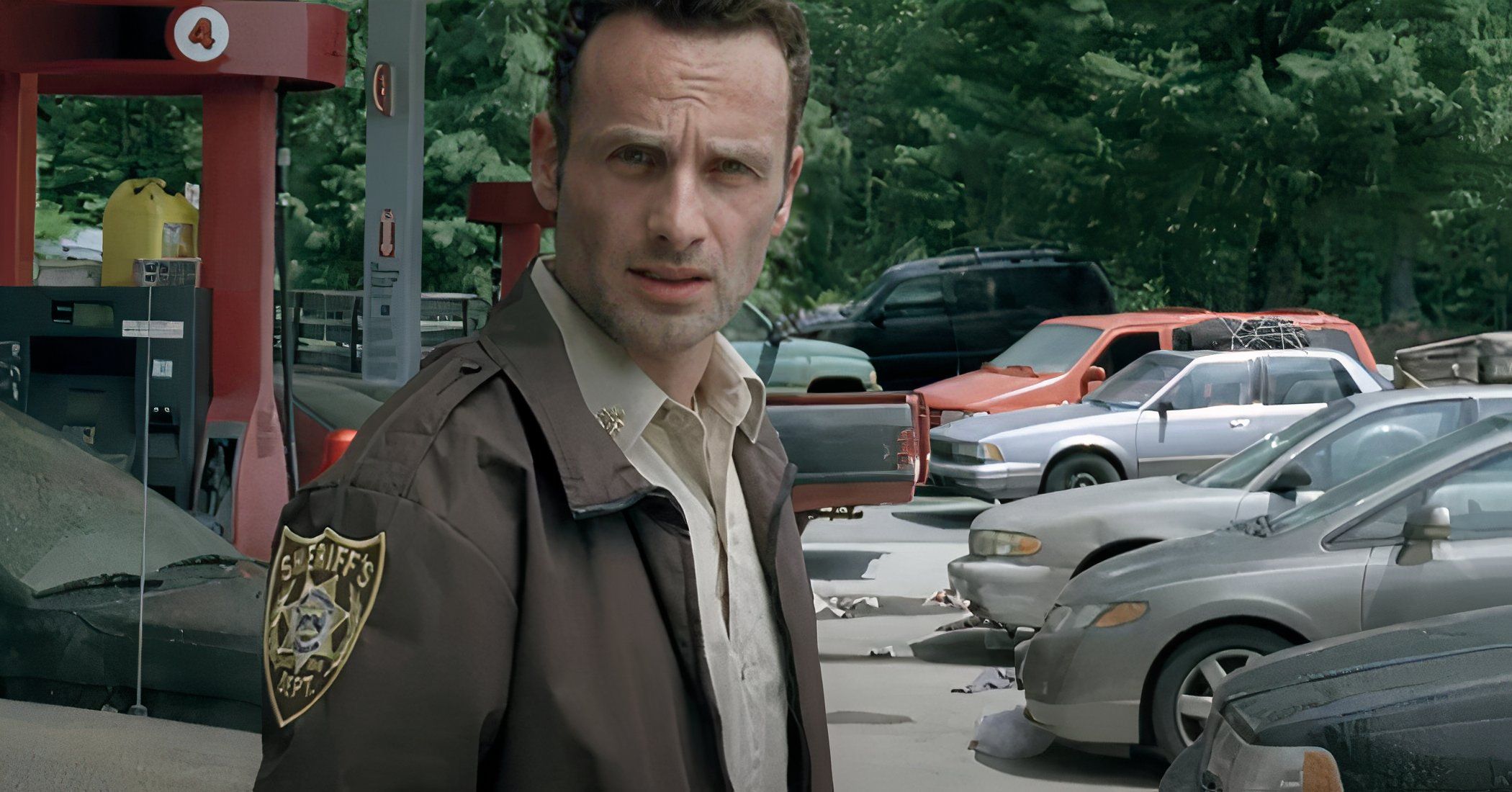
Right from its debut episode, “The Walking Dead” opts for a more straightforward approach. The pilot, titled “Days Gone Bye,” plunges viewers into the thick of things by showing Grimes waking up in a hospital room, bewildered and isolated. The world he once knew has vanished – Atlanta stands as a spectral city, bodies decay on its streets, and walkers wandering through deserted communities are a common sight.
In Season 1, viewers are treated to a dramatic flashback showing the chaos in downtown Atlanta as Shane Walsh (Jon Bernthal) witnesses a military bombing. This intense scene is captivating, but it also leaves us questioning the situation: If the military was still functional, wouldn’t they have been able to maintain order, considering their willingness to bomb entire cities?
In later installments of “The Walking Dead”, crucial details about the government’s handling of the situation are left unexplored. Characters such as Eugene Porter (Josh McDermitt) hint at attempts by the government, but we never witness the actual demise. By the time characters like the Governor (David Morrissey) in Woodbury or Negan (Jeffrey Dean Morgan) and his Saviors appear, the world has already descended into chaos. The viewers are expected to believe that the collapse was imminent.
In a simplified manner, many zombie narratives, such as “The Walking Dead,” bypass the initial stages of the outbreak. Movies like “28 Days Later” (2002), for instance, portray characters waking up from a coma to find themselves in an empty London. Similarly, the “Resident Evil” films rush past the destruction and delve directly into the post-apocalyptic aftermath. Even Brad Pitt’s “World War Z” skims over crucial details, focusing more on worldwide action than explaining the events that led to the chaos. However, this is often due to the significant challenge writers face in making the collapse of all civilization at the hands of slow, lumbering zombies seem plausible.
Why Zombie Apocalypses Are So Hard To Pull Off
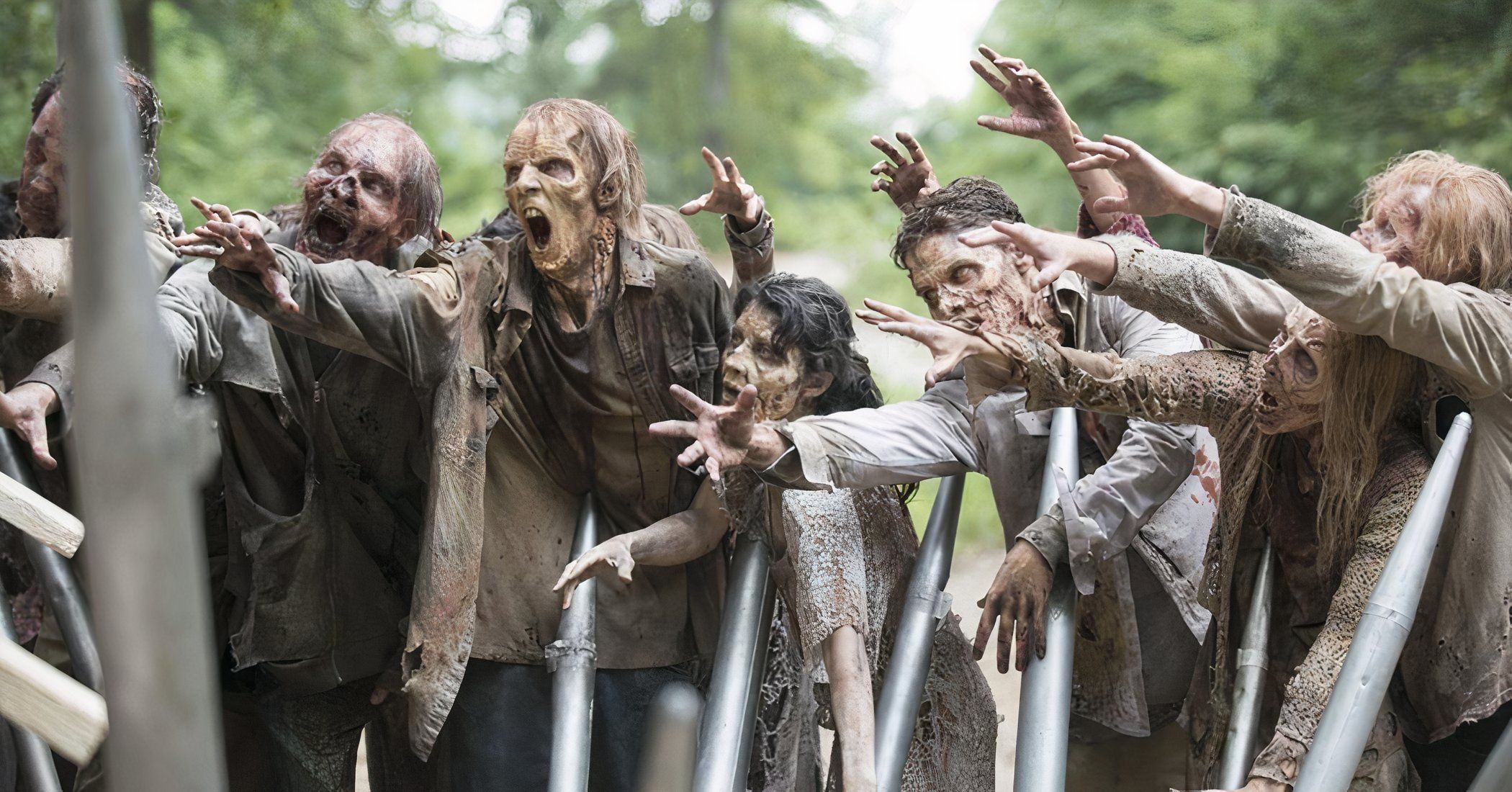
In theory, zombies such as the ones depicted in The Walking Dead shouldn’t pose a significant danger due to their sluggish movement, poor coordination, and susceptibility to distraction or elimination. However, there are variations like the rage-infested creatures from 28 Days Later or the swift hordes in Train to Busan that exhibit greater speed and lethality. But the traditional zombies, akin to those in The Walking Dead, can be considered as mere lumbering cadavers.
The Military Would Wipe Out Walkers
Despite the military being supposedly eliminated within weeks in “The Walking Dead”, small bands of untrained survivors miraculously survive for years. This seems inconsistent. A fan on Reddit aptly expressed this confusion in a post titled “The Walking Dead makes no sense at all when you stop and think about it,” stating:
As a cinephile, I can’t help but marvel at the might of the United States military, a force so formidable it stands unmatched on our planet. With over 1.4 million active members, it’s hard for me to accept that some undead apocalypse could have possibly wiped them all out. Such an idea, frankly, borders on insanity.
They further detail how a solitary Marine armed with thirty bullets can effortlessly eliminate thirty zombies. Considering penetrating shots, several clips per soldier, and the immense firepower at their disposal, it’s almost amusing to imagine that the undead could overpower the military. With resources and supply lines intact, a well-drilled military force should find it easy to repel slow-moving, mindless adversaries.
Leaving aside the consideration of weapons of massive destruction, drones, tanks, and air support, it’s important to note that zombies don’t wield guns or take cover. In a real-life outbreak scenario, military forces might find it relatively simple to eliminate them. Even precautions suggested by the Centers for Disease Control and Prevention (CDC) could help curb the spread of such an infection. If a virus like Ebola or COVID-19 necessitates widespread lockdowns, so too would an outbreak transmitted through zombie bites.
In the book version of World War Z, an attempt is made to delve into the reasons behind the collapse, illustrating how red tape, mass hysteria, and political blunders exacerbated the situation. Conversely, The Walking Dead bypasses these complexities, suggesting that society had already disintegrated before we get a chance to witness the process unfold.
Fear the Walking Dead Tried to Correct Course, But It Didn’t Quite Work
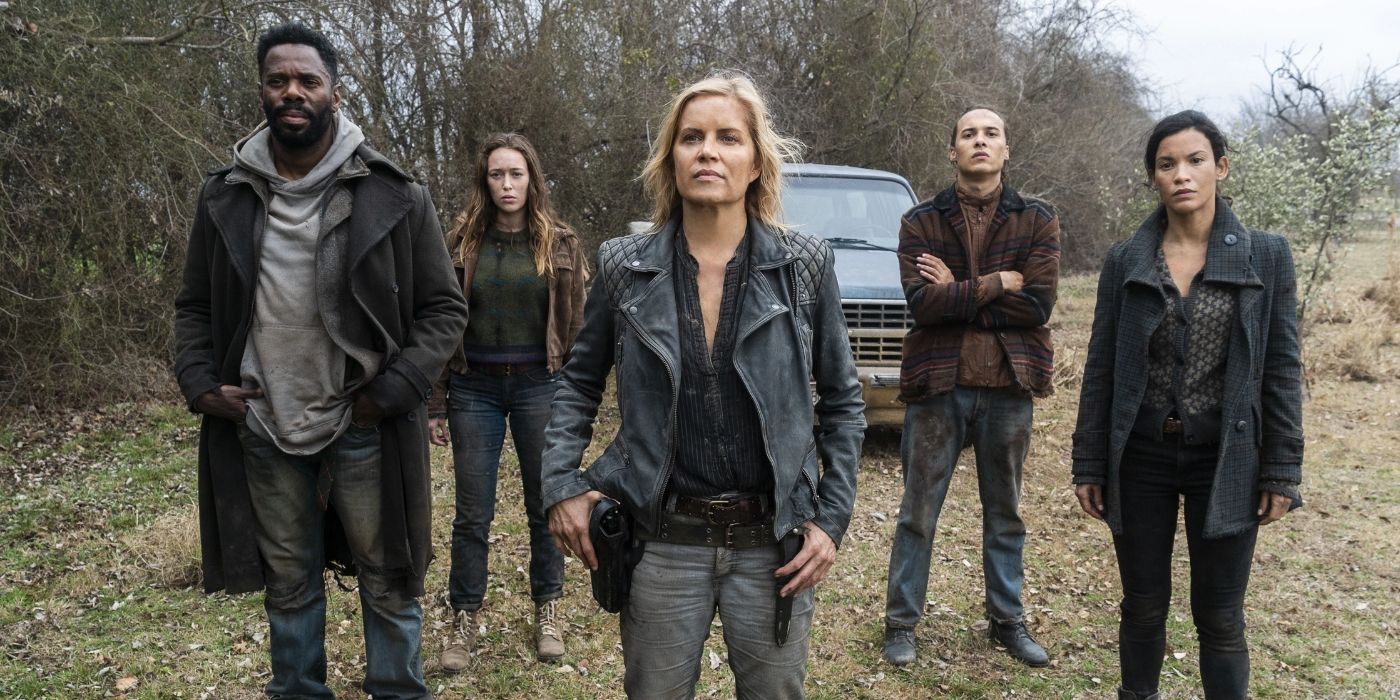
Upon AMC’s debut of “Fear the Walking Dead“, it appeared as though they were about to provide long-awaited answers. Initially set in Los Angeles, the show centers around the Clark family, who experience the initial stages of the zombie outbreak. Compared to its predecessor, “Fear the Walking Dead” delivers a more compelling portrayal during its first season. We witness hospitals becoming overrun, riots erupting, and the National Guard struggling to preserve order. It offers a unique perspective — that is, until everything deteriorates far too swiftly. By the end of Season 1, the world has already succumbed, with the military disappearing, cities left abandoned, and civilization reduced to scattered survivors.
As a passionate movie enthusiast, I’ve got to say that Fear the Walking Dead missed its mark for me. Instead of meticulously unfolding the decline of society across various seasons, it sprints through the most gripping phase. By Season 2, we’re back to the familiar survivalist and isolationist themes seen in The Walking Dead, with small bands of survivors scrapping over resources. It seemed like they had an opportunity to break new ground, but unfortunately, they fell back on the well-trodden path.
As a cinephile, I can’t help but point out one particularly jarring instance – the controversial chain-link fence sequence. A fellow Redditor expressed their displeasure about this scene in the following words:
(Original sentence: One of the most egregious examples is the infamous chain-link fence scene. One Reddit user commented)
In a humorous twist, “Fear The Walking Dead” portrays an organized military unit suffering an embarrassing defeat. It’s as if the zombies were forcing their way through a chain-link fence, and the soldiers were firing at them frantically, but their bullets were merely ricocheting off the fence instead of hitting their targets.
Zombie Stories That Pulled It Off (Or At Least Felt Plausible)
- The Last of Us: HBO’s adaptation of the video game takes a fairly realistic approach to the transition. The first episode’s prologue shows panic in the streets, military-enforced lockdowns, and the government’s brutal response. The infecteds are also fast, agile, and strong, unlike walkers. It feels real and immediate. Even though there’s still a 20-year time jump that skips over the full collapse, when the story picks back up, the QZs feel like a more accurate evolution of society than a total wipe out.
- Train to Busan: This South Korean film takes place during the outbreak itself, with characters experiencing the horror in real time. The infection spreads rapidly, and viewers watch organized government and military responses collapse under the sheer pace and panic. In one pivotal scene, the military sets up a blockade to quarantine infected zones — but the zombies overwhelm them with speed and volume before protocols can be executed. The movie finds its realism in a balance of human error, bureaucratic delay, and the terrifying speed of transmission.
- 28 Weeks Later: While not depicting the origin of the outbreak and fall of civilization, this sequel realistically depicts the dangers of trying to rebuild society after an outbreak. It shows both attempted military control and how quickly things can fall apart when a single mistake is made. The long-awaited upcoming sequel 28 Years Later has big shoes to fill.
Suspension of Disbelief Is Important for Enjoying The Walking Dead
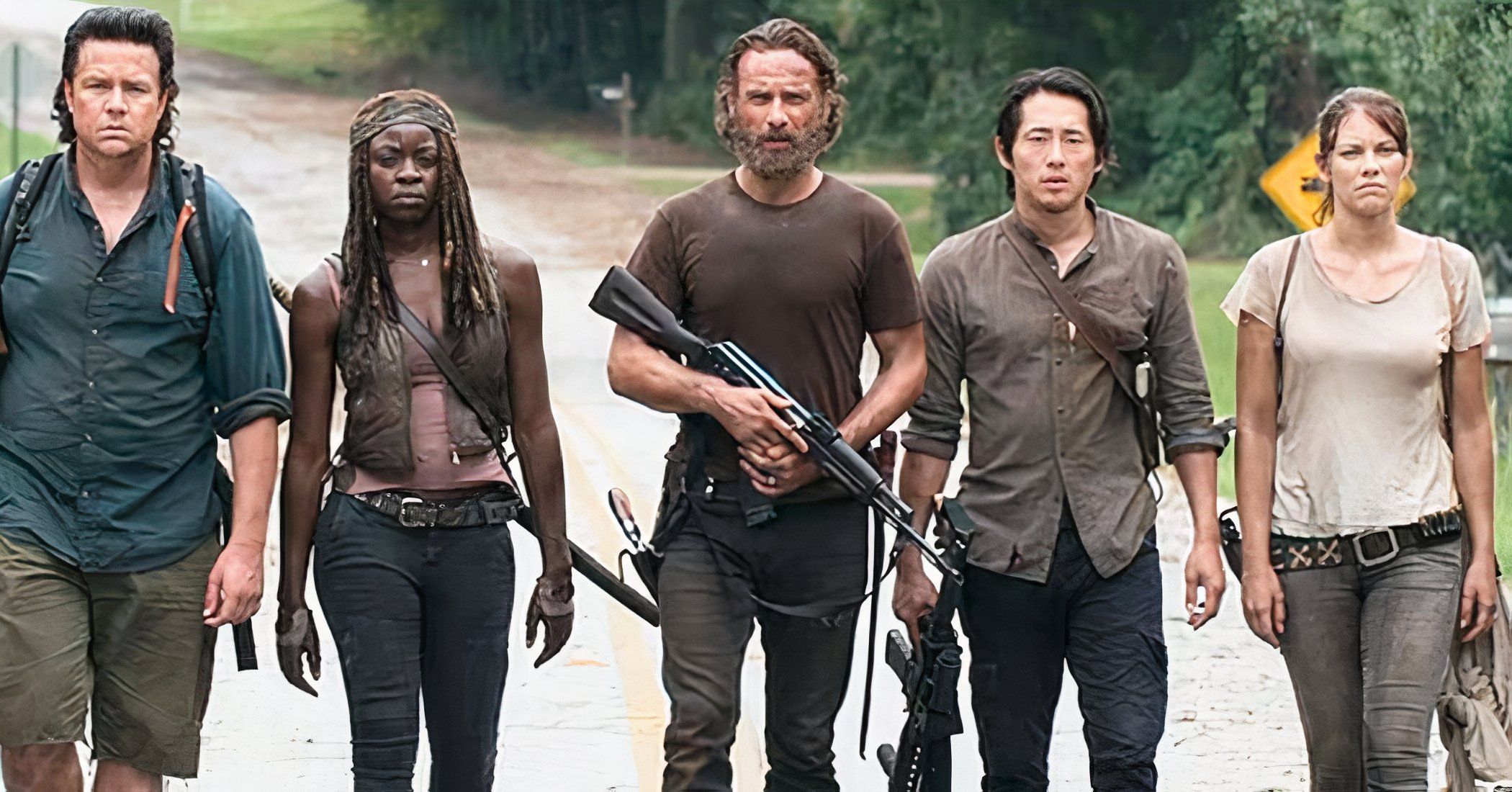
In essence, the success of The Walking Dead lies in its emphasis on characters rather than the intricacies of how the apocalypse unfolded. The series doesn’t require a detailed, hyper-realistic account of the world’s demise; instead, it thrives on intriguing survivors and high-stakes drama. Admittedly, the concept of zombies overpowering the entire U.S. military seems implausible. However, if viewers can accept characters like Danai Gurira’s katana-wielding Michonne and Norman Reedus’ crossbow-skilled Daryl Dixon as authentic human beings as well as action heroes, that’s all that truly matters.
Read More
- UNLOCK ALL MINECRAFT LAUNCHER SKILLS
- The White Rabbit Revealed in Devil May Cry: Who Is He?
- Unaware Atelier Master: New Trailer Reveals April 2025 Fantasy Adventure!
- REPO: How To Fix Client Timeout
- 8 Best Souls-Like Games With Co-op
- One Piece Episode 1124 Release Date And Time Countdown
- Unlock Roslit Bay’s Bestiary: Fisch Fishing Guide
- Top 8 UFC 5 Perks Every Fighter Should Use
- Minecraft Movie Meal Madness
- BTC PREDICTION. BTC cryptocurrency
2025-04-05 01:29